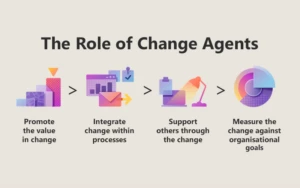
Using new skills and technology to empower teachers and the future workforce
As the Director of Education in the UK, Ian leads our work with schools, colleges, universities and other learning organisations across the UK. He is also a Mayor of London Technology Ambassador & Advisory Board member of Edtech UK.
There’s a huge amount of new technology being created each year, and as a bonus a lot of this technology is becoming more accessible quicker, easier, and is cheaper than ever.
However, with a widening digital skills gap looming in the economy and more demand for impactful tech, it’s important that we implement these tools within schools from primary level, all the way to higher education and beyond into work and lifelong learning.
Young people entering school today will face challenges in the future that we can’t imagine. Therefore, we need to prepare not only their digital knowledge, but their soft skills that are integral to being part of a collaborative society. According to our research with Mckinsey into the ‘Class of 2030’ up to 40% of future jobs will require more social and emotional skills.
According to the research, students also want personalised learning. This means that for the future, there is an important role for the human and personal to work alongside technology – so teaching will get the benefits of automation but not be fundamentally disrupted by it. By using technology, teachers can not only leverage tools that help create personalised learning for every student, but also free up their own time to focus on planning, sharing learning with their peers and reducing their workload.
Big data, big results
In the era of the AI revolution it’s not only businesses that can leverage big data. Education practitioners can also use their own data to predict test results, track students’ progress, and identify students who might be at risk or early drop out.
Why is this a good thing? By building systems that can identify and predict student performance, teachers can spot a student struggling or those who are starting to struggle and provide them with the real time support they need. They can also spot weak points in the curriculum or courses that may need improvements based on feedback or student attendance records.
Jonathan Bishop, Headteacher at Broadclyst Community Primary School has already seen results.
“Using the data that is taken in online test scores saves them [teachers] all the time of manually analysing children’s progress,” he says. “All these digital tools are really supporting the teacher in assessing, planning, marking, and tracking progress of children through their schoolwork.”
New approaches to learning
While we can expect the future of learning to include technological advances like AI, it’s primary purpose will be to augment learning, not take over from teachers. 98 percent of students perform better with personalised learning approaches and by using technology we can help students without overloading teachers.
Personalised learning has been a holy grail for education – yet it has taken to time to come to fruition. Creating personalised content and pathways for students is vitally important, meaning they can work in class at their own speed with the teacher acting as a facilitator for each student, helping them on their journey.
In Marlow, the Danesfield School made educational technology and personalised learning and professional development a key part of their school improvement strategy. Three years ago, they were in the bottom 10% for reading, writing, and mathematics. After two years of their ‘technology first’ approach, they now sit in the top 1 percent nationally.
“At the heart of our new approach sits technology. Not technology as an end itself, but as a facilitator for creative approaches, collaboration, personalised learning, and professional development,” says Headteacher Sarah Morgan.
Tools to help students
Building digital skills for the future is very important – it’s predicted that we’ll have a shortage of around 900,000 workers across Europe by 2020. It’s also important to note that jobs are going to change and evolve with technology. By embracing digital skills early we’re empowering the future to ensure no one is left behind.
We’ve supported this via our Microsoft Digital Skills programme, which offers learning programmes, tools, and links for everyone – from young students, to higher education, to IT professionals and teachers.
We’re also gamifying learning with Minecraft Education. It encourages creativity and collaboration in a safe, open learning environment. It also teaches skills such as coding, problem solving, communication, and critical thinking.
It’s important that society supports the learning of not only digital skills, but creative, social, and emotional skills as well – something highly valued by students and their future employers. 42 percent of employers believe new graduates are adequately prepared for the workforce, especially with the right emotional and social skills.
To do this, there is a greater need for technology to support creativity and STEM and giving students new experiences. Luckily, there’s plenty out there that can help support this.
Charlotte Coade, Year 6 teacher from Simon De Senlis Primary School observed how Windows 10 and Office 365 changed the dynamics of her classroom. “You will see students working together collaboratively, sharing ideas through Office 365 and working on their own. And right next to them, there are children who are leading others, sharing their knowledge, and helping push everyone forward.”
Students can now experience even more in the classroom than ever before. Instead of reading from textbooks and looking at diagrams, students can experience virtual reality or augmented reality to explore human anatomy, go into outer space, find treasures in pyramids and much more.
They can also directly reach experts and other classes via Skype in the Classroom, Microsoft Teams or our annual Skypeathon where schools and classes travel thousands of virtual miles to connect with each other. With translation and accessibility tools, it opens the world to the classroom and the classroom to the world.
Tools to help teachers
Accessibility and inclusion is a vital component of a teachers and schools work. Imagine an entire class with different needs – some racing ahead and others needing much more support. Learning Tools and the Immersive Reader provide a great way to level the playing field for all the class. It helps students follow the words and lines in a story or exercise. For example, by highlighting component parts of words such as nouns, syllables, and verbs. It also provides line focus and reads aloud text and pictures for those students who might be visually impaired.
Also, we expect to see AI take on more automated tasks such as assessment, grading and keeping track of progress, meaning teachers will get back valuable time they need to plan lessons or help students.
Microsoft Teams can be used to easily organise the classroom and give a place for students to have a voice and teachers can use it to swap and share lesson plans too.
“Teaching is now a two-way, interactive process as resources from OneNote are annotated and synced to every child’s notebook,” says Jonathan Bishop, Headteacher at Broadclyst Community Primary School. “Having the information in a purposeful, engaging, relevant format will get better outcomes, so for teachers it’s really motivational.”
With the right technology, teachers can get up to 30 percent of their time back, which they can spend on personalised teaching, to empower their students.
Accessibility for all
The great thing about technology is it ensures no one gets left behind. With Learning Tools for OneNote you can improve comprehension, independent reading, and build confidence.
OneNote also has an option called Office Lens which makes printed content digitised and accessible. Take a photo of an old newspaper clipping and Office Lens will upload it to a OneNote. All of a sudden, this clipping can be transcribed via Immersive Reader, or the text can be formatted to suit individual needs.
Immersive Reading and other accessibility tools are also available on other Microsoft applications, and the accessibility checker is a great tool for teachers to use to ensure work and lessons are accessible for all.
Skype can live translate or transcribe languages, meaning students with hearing impairments or language barriers will be able to quickly understand in the classroom. It can also help during parent/teacher conferences when there is no common language. This removes the burden of the student being the translator and teachers can have easy and fast discussions with parents. Skype can also help engage parents who can’t attend in-person meetings.
And as you can see, harnessing technology to empower students in the classroom is important if we want a create a workforce of passionate people. It also allows teachers to gain back time, so they can focus on personalised learning and equipping students with the soft and technical skills they need to face the challenges of the future.
Find out more
Address the digital skills gap




